Click on images to enlarge
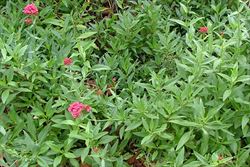
habit (Photo: Sheldon Navie)

habit (Photo: Sheldon Navie)

lower leaves (Photo: Sheldon Navie)

stem and stalkless paired upper leaves (Photo: Sheldon Navie)

close-up of uppermost leaves and young flower cluster (Photo: Sheldon Navie)

red flowers (Photo: Sheldon Navie)
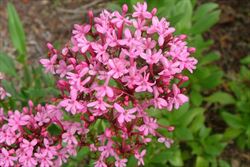
pink-flowered form (Photo: Sheldon Navie)
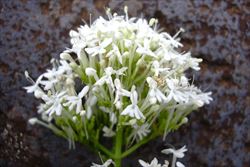
white-flowered form (Photo: Forest and Kim Starr, USGS)
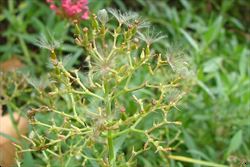
immature fruit (Photo: Sheldon Navie)
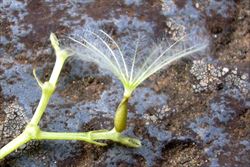
close-up of immature fruit topped with feathery hairs (Photo: Forest and Kim Starr, USGS)

close-up of seeds with hairs removed (Photo: Jose Hernandez at USDA PLANTS Database)
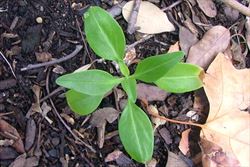
seedling (Photo: Sheldon Navie)
Scientific Name
Centranthus ruber (L.) DC. subsp. ruber
Synonyms
Centranthus ruber (L.) DC.Valeriana rubra L.
Family
Valerianaceae
Common Names
fox's brush, Jupiter's beard, keys to heaven, kiss me quick, kiss-me-quick, red spurred valerian, red valerian, spur valerian, sweet valerian, valerian
Origin
Native to southern Europe (i.e. Albania, Greece, Ukraine, Italy, Yugoslavia, France, Portugal and Spain) and parts of the Mediterranean region (i.e. the Azores, the Madeira Islands, the Canary Islands, Algeria, Morocco, Tunisia, and Turkey).
Naturalised Distribution
Widely naturalised in southern Australia (i.e. in south-western and southern Western Australia, south-eastern and eastern South Australia, southern Victoria, some parts of eastern New South Wales, ACT and Tasmania).
Also naturalised on Lord Howe Island and overseas in western USA and Hawaii.
Notes
Red valerian (Centranthus ruber subsp. ruber) is regarded as an environmental weed in Tasmania, South Australia, Victoria and Western Australia. It is gorwn as an ornamental and escapes cultivation to invade firebreaks, roadsides, granite outcrops, open woodlands and coastal environs, where it can from dense monocultures and displace native herbs.
In Porongurup National Park, in south-western Western Australia, rangers have been battling this species as it invades karri forests. In the same region, red valerian (Centranthus ruber subsp. ruber) has invaded the tuart and banksia woodlands of the Paganoni Swamp. It has also invaded conservation areas in South Australia (i.e. Naracoorte Caves Conservation Park, Black Hill Conservation Park and Ferguson Conservation Park). In Tasmania and Victoria, red valerian (Centranthus ruber subsp. ruber ) is primarily a problem in coastal habitats, where it invades sand dunes.
This species is also regarded as being invasive along parts of the west coast of the USA, and is potentially invasive in Hawaii.

